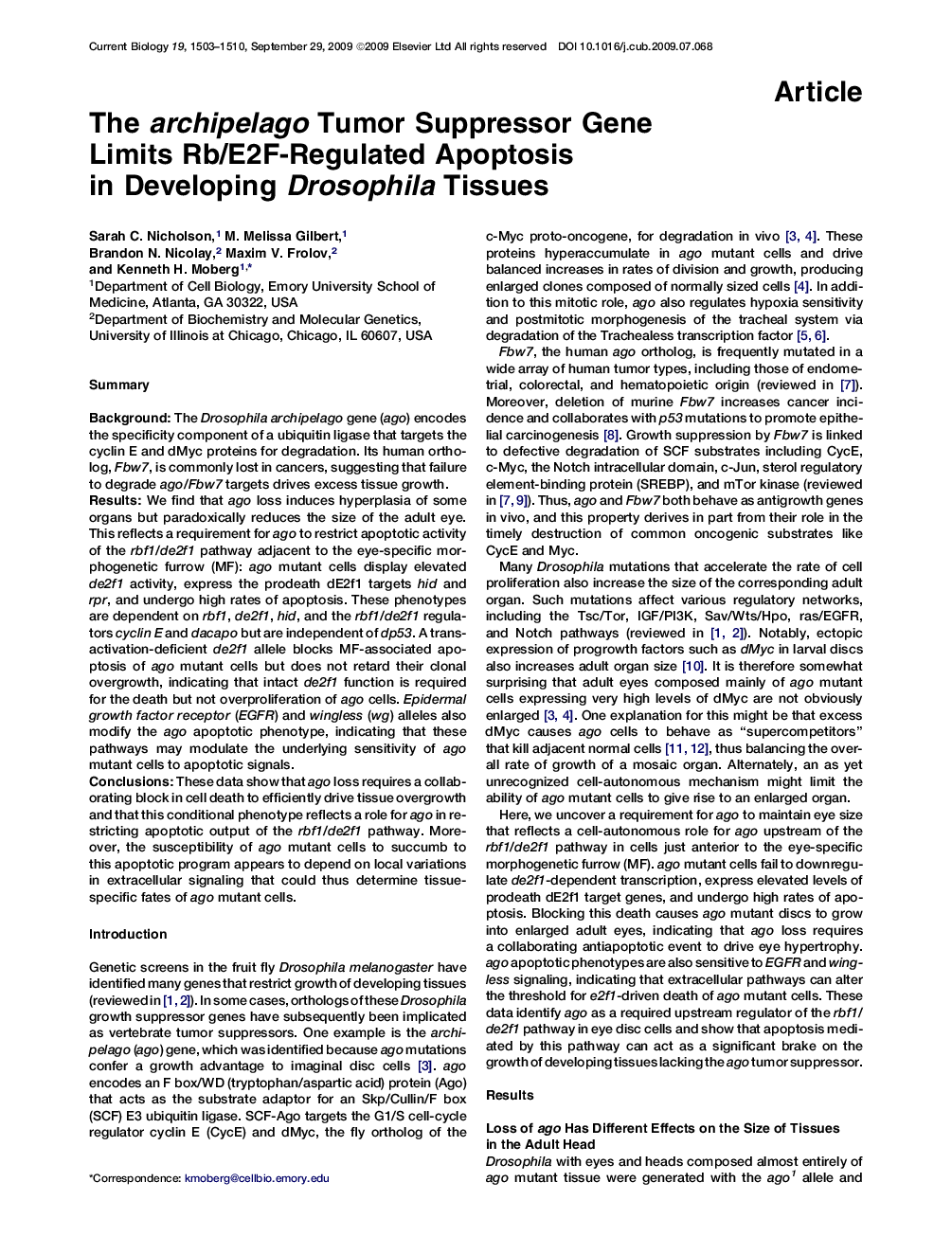| Article ID | Journal | Published Year | Pages | File Type |
|---|---|---|---|---|
| 2043312 | Current Biology | 2009 | 8 Pages |
SummaryBackgroundThe Drosophila archipelago gene (ago) encodes the specificity component of a ubiquitin ligase that targets the cyclin E and dMyc proteins for degradation. Its human ortholog, Fbw7, is commonly lost in cancers, suggesting that failure to degrade ago/Fbw7 targets drives excess tissue growth.ResultsWe find that ago loss induces hyperplasia of some organs but paradoxically reduces the size of the adult eye. This reflects a requirement for ago to restrict apoptotic activity of the rbf1/de2f1 pathway adjacent to the eye-specific morphogenetic furrow (MF): ago mutant cells display elevated de2f1 activity, express the prodeath dE2f1 targets hid and rpr, and undergo high rates of apoptosis. These phenotypes are dependent on rbf1, de2f1, hid, and the rbf1/de2f1 regulators cyclin E and dacapo but are independent of dp53. A transactivation-deficient de2f1 allele blocks MF-associated apoptosis of ago mutant cells but does not retard their clonal overgrowth, indicating that intact de2f1 function is required for the death but not overproliferation of ago cells. Epidermal growth factor receptor (EGFR) and wingless (wg) alleles also modify the ago apoptotic phenotype, indicating that these pathways may modulate the underlying sensitivity of ago mutant cells to apoptotic signals.ConclusionsThese data show that ago loss requires a collaborating block in cell death to efficiently drive tissue overgrowth and that this conditional phenotype reflects a role for ago in restricting apoptotic output of the rbf1/de2f1 pathway. Moreover, the susceptibility of ago mutant cells to succumb to this apoptotic program appears to depend on local variations in extracellular signaling that could thus determine tissue-specific fates of ago mutant cells.
